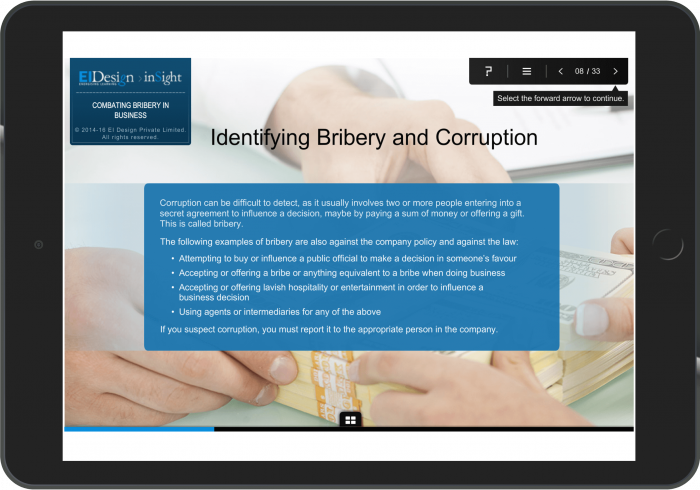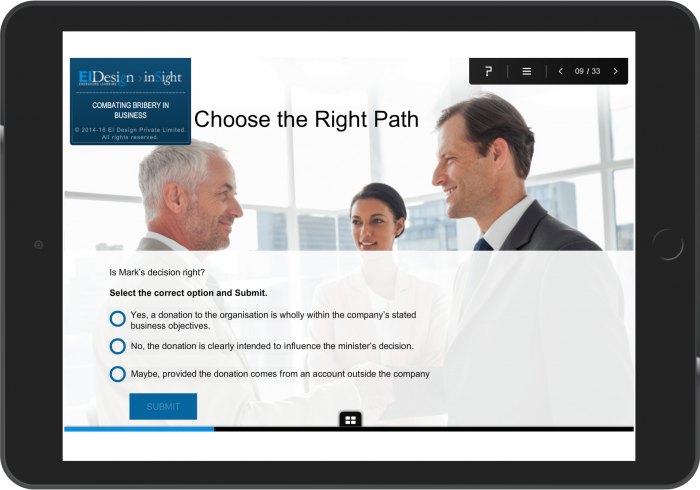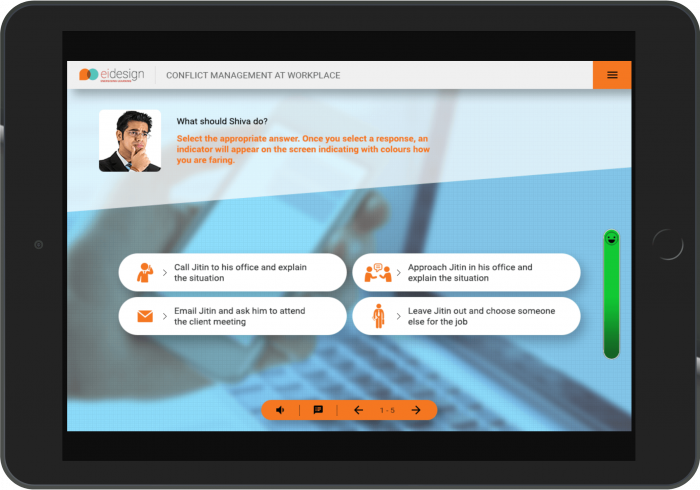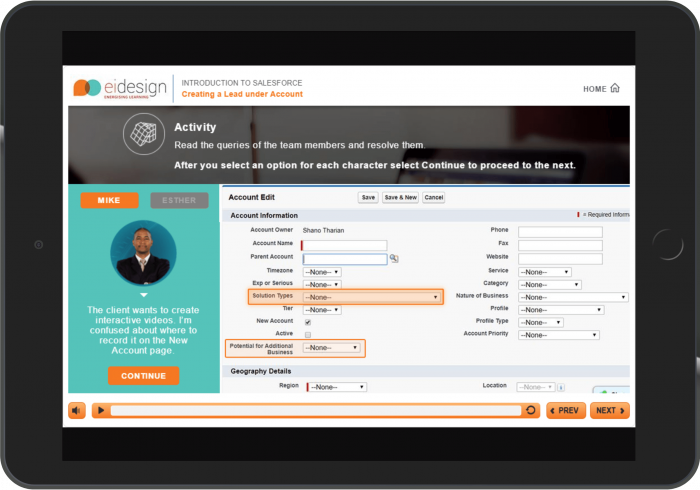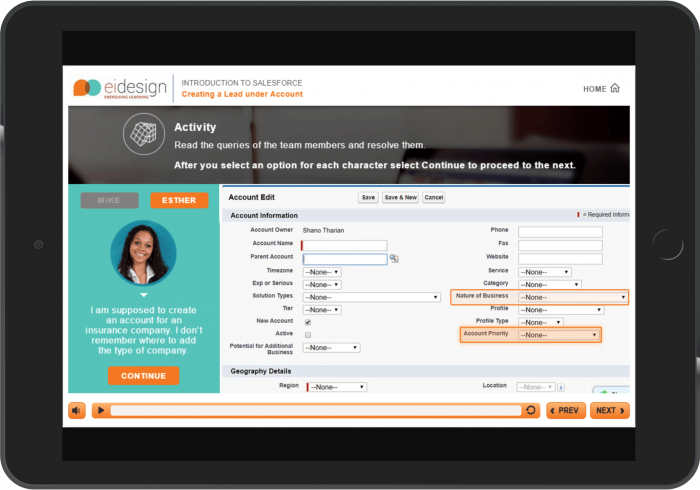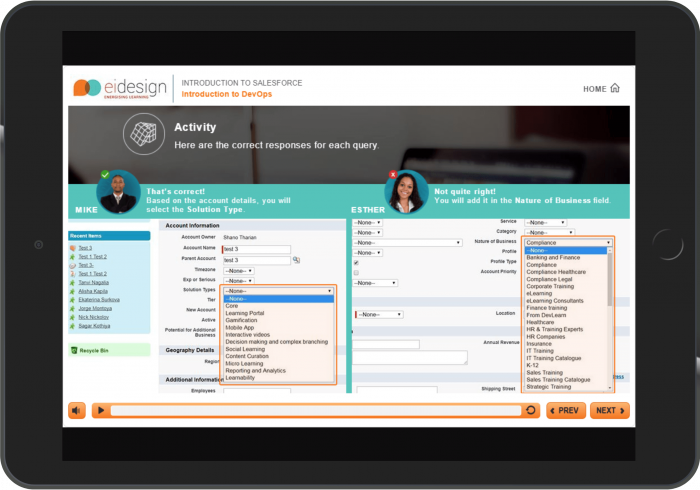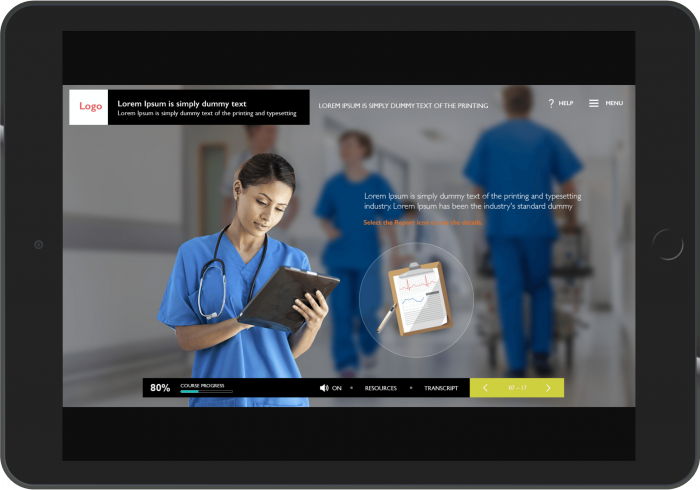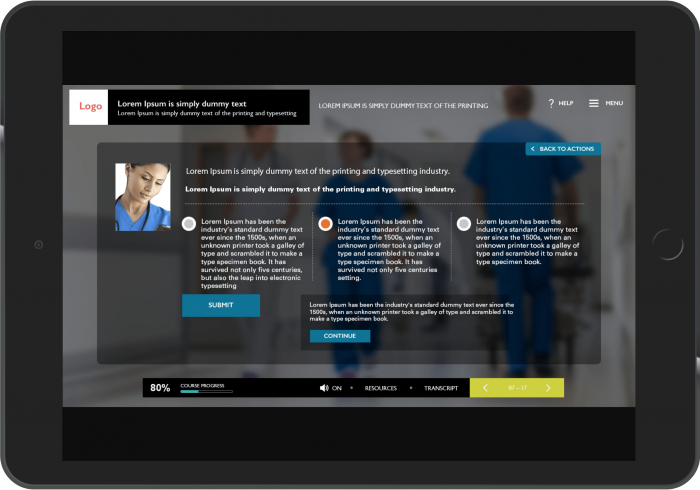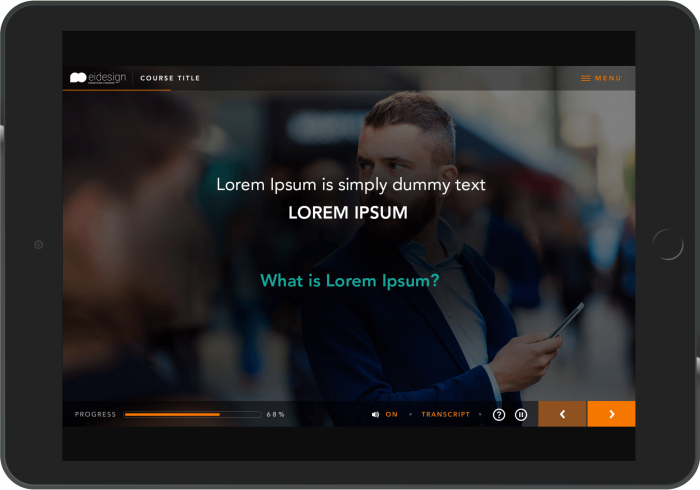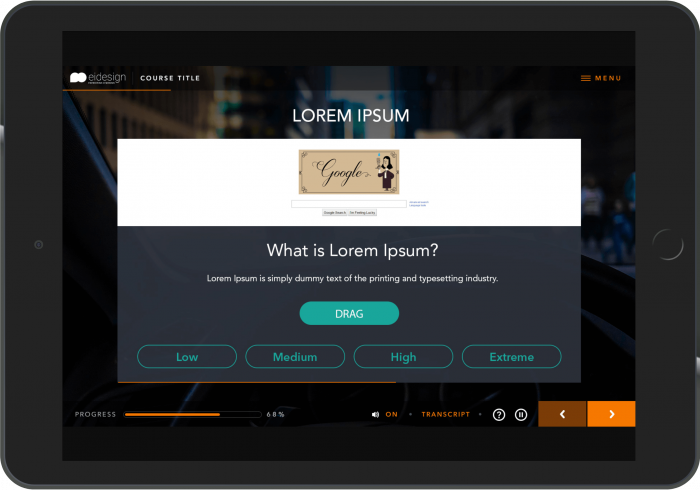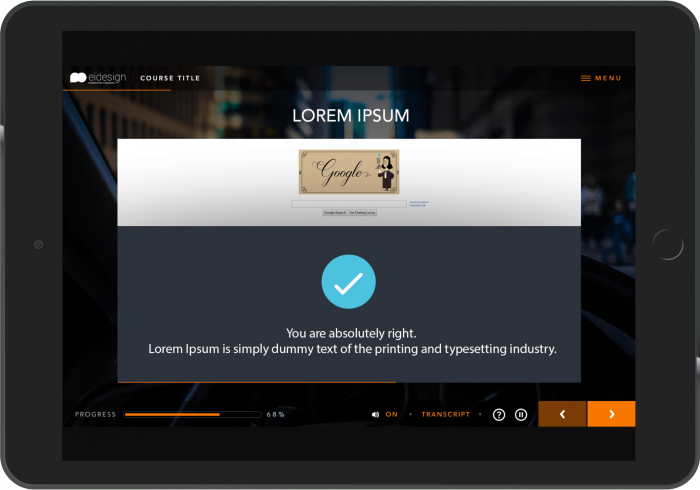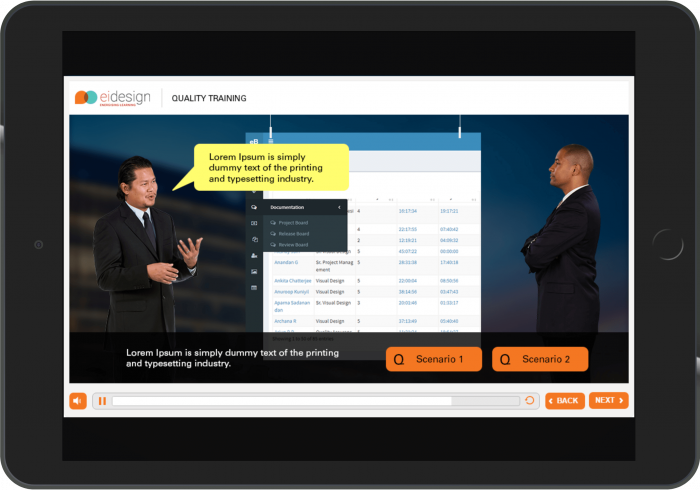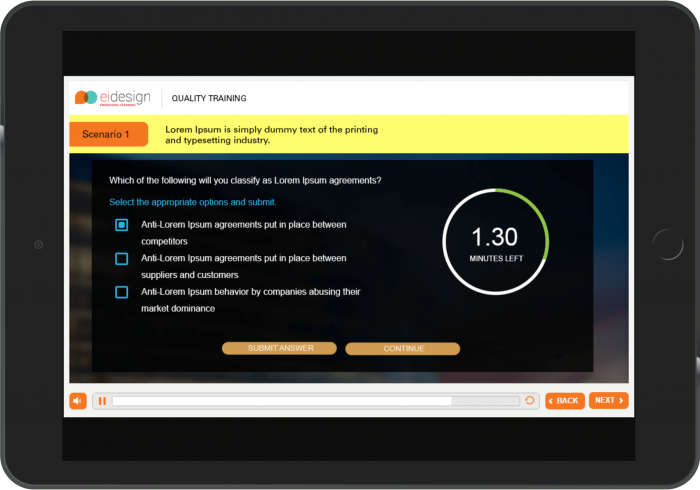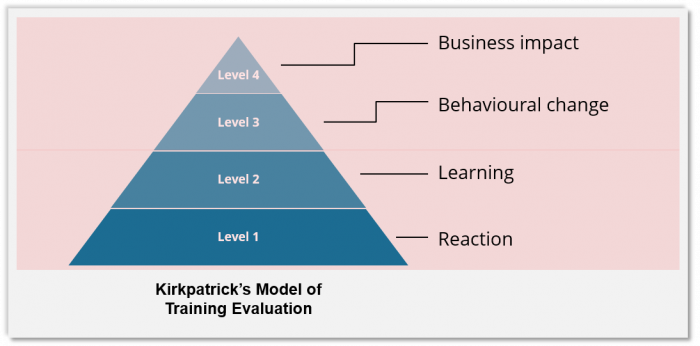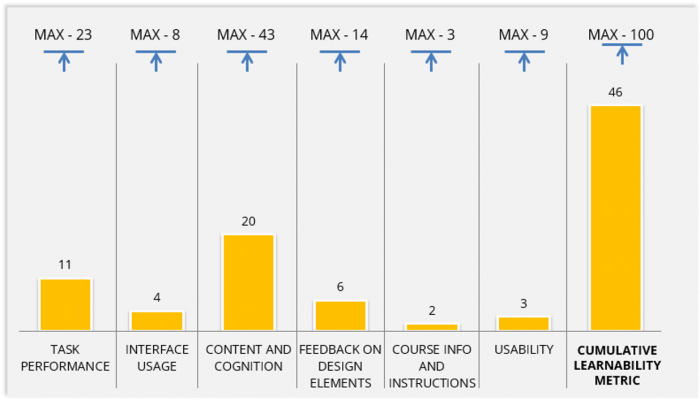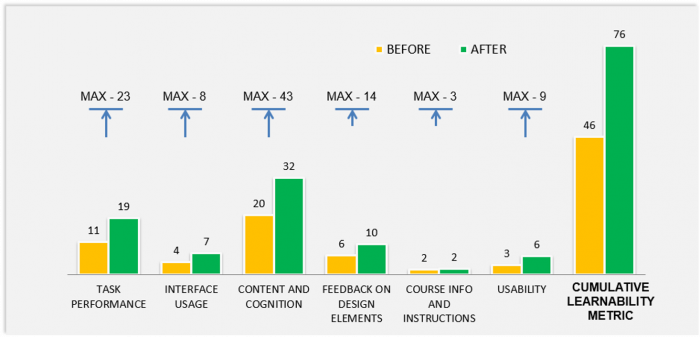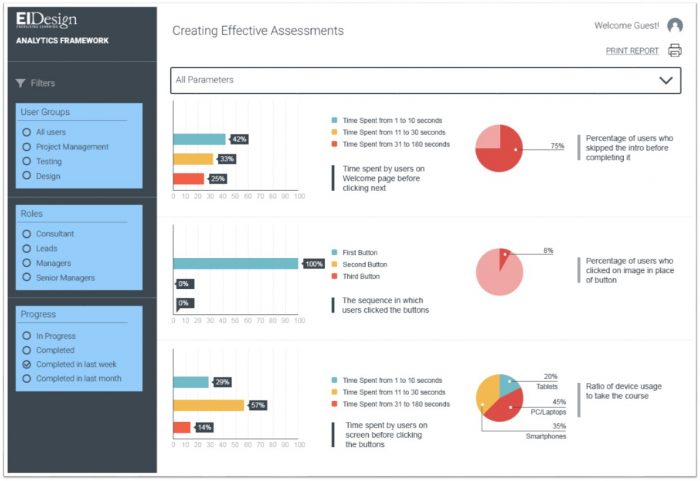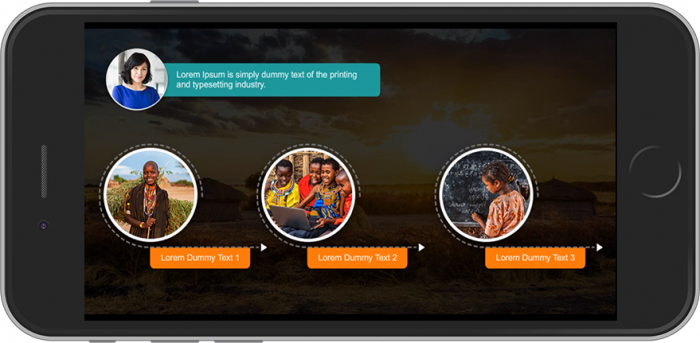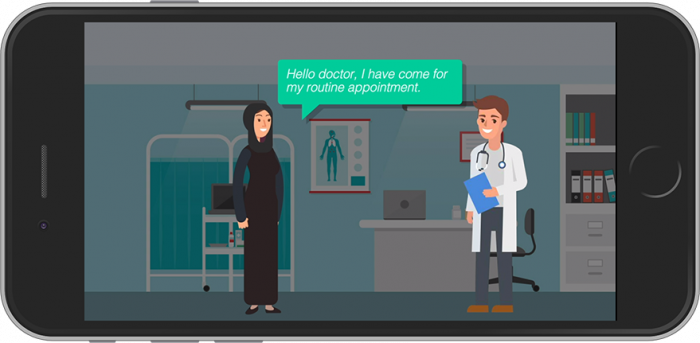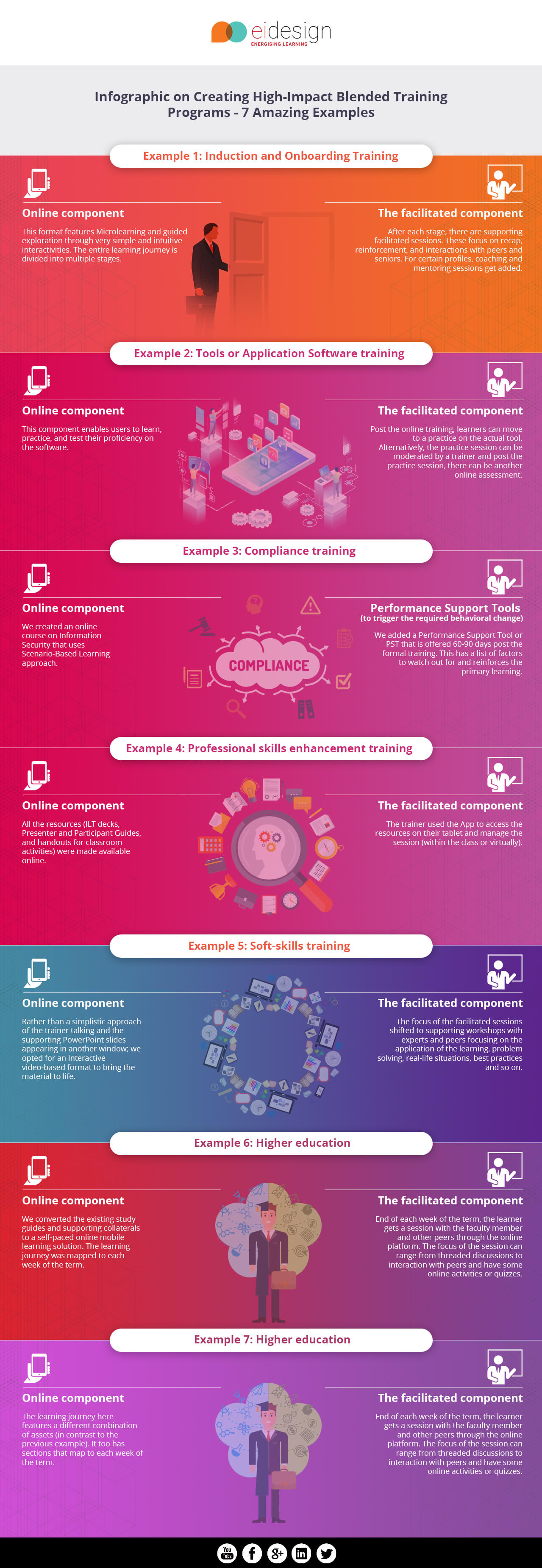At this time of the year, you look out for trends that can
enhance your training delivery. In this article, I share the eLearning Trends
in 2019 you can use to enhance, measure, and maximize the impact and returns on
your learning strategies.
eLearning Trends In
2019 You Can Use To Enhance Your Learning Strategy
As I began my exercise to predict eLearning Trends in 2019,
the fourth one in this series, I took a step back to see why anyone seeks
upcoming trends.
The top 5 reasons why L&D teams look at trends are
listed here. They prompt them to adopt new or better approaches that:
- Keep
the learners engaged.
- Ensure
knowledge acquisition happens.
- Facilitate
the application of the acquired learning on the job.
- The
desired performance gain and ROI occurs.
- A
positive ROI on training spend is established.
In this article, I take this need as the thread to share the
eLearning Trends in 2019. I have grouped them as follows:
- Section
1: I list the trends that help learners learn and, more
significantly, apply this learning to show better performance or the
required behavioral change.
- Section
2: I list trends featuring learning strategies with a proven
track record of delivering a better engagement quotient and higher
training impact.
- Section
3: I follow this up with a list of trends that organizations must
invest on to measure, enhance, and maximize the impact of their training.
- Section
4: I wrap up with trends that are clearly emerging as front
runners for investment in the very near future.
With this approach, I am confident that the featured
eLearning Trends in 2019 in this article will offer tremendous value in
enhancing your learning strategies in the New Year.
Upcoming Release: I also have a free eBook on
eLearning Trends in 2019 releasing on Jan 15th.
- Designed
as a guide that you can practically use, it features a typical learner
journey that highlights how modern learners learn and what they wish to
see in their online training delivery.
- I use
this backdrop to highlight how the featured eLearning Trends in 2019 can
be used to add value to learning and its application plus measurement and
further gains.
Without further ado, here is my list of eLearning Trends in
2019 banded logically to facilitate their impact and application.
eLearning Trends In 2019 – Section 1: The Trends
That Help Learners Learn And Apply This Learning To Show Better Performance Or
Behavioral Change.
- Mobile
Learning
- Digitalization
of ILT (to Blended or Fully Online)
- Performance
Support Tools
- Informal
Learning
- Social
Learning
- Self-Directed
Learning
eLearning Trends In 2019 – Section 2: Learning Strategies
With A Proven Track Record Of Delivering A Better Engagement Quotient And
Higher Training Impact.
- Microlearning
- Gamification
- Video-Based
Learning (Videos and Interactive Videos)
- Mobile
Apps for Learning
- Personalization
- Curation
and User Generated Content
eLearning Trends In 2019 – Section 3: The Trends That
Organizations Must Invest On To Measure, Enhance, And Maximize The Impact Of
Their Training.
- Learning
Engagement Platforms – LXP
- Learner
Analytics
- Big
Data-Reporting and Analytics
eLearning Trends In 2019 – Section 4: Other Notable
Trends To Watch Out For—The Future Is Here!
- AR/VR
and MR for Immersive Learning
- Artificial
Intelligence (AI) in Learning
eLearning Trends In 2019 – Section 1: The Trends That Help
Learners Learn And Apply This Learning To Show Better Performance Or Behavioral
Change.
eLearning Trends In 2019 – Trend #1: Mobile Learning
Over the last 4–5 years, the adoption of
Mobile Learning has been on the rise.
This is on account of the flexibility it provides to learners (learning on the
go, multi-device support – including smartphones, tablets or laptops/desktops,
and anytime and anywhere access).
From an organization’s perspective, this is clearly an
approach that resonates better with learners, offers higher engagement,
provides better completion rates, and can be used to support both formal and
informal trainings.
What I see changing in 2019 is the maturing of Mobile
Learning solutions, leading to a bifurcation into mobile friendly or
adaptive designs and mobile first or fully responsive designs.
The latter will align better to the way learning is expected to be consumed
(notably on smartphones) and will feature learning interactions optimized for
them.
Additionally, Mobile Learning will be used to offer almost
the entire spectrum of corporate training needs. It will feature high-impact
formats including videos, Microlearning, and apps for learning.
eLearning Trends In 2019 – Trend #2: Digitalization Of
ILT (To Blended Or Fully Online)
While the ILT mode is not dying, it will soon start getting
limited to niche programs. 2019 will see further increase in the Digitalization
of ILT (to
blended or fully
online). Even the core ILT delivery will get supported by online resources
including pre- and post-workshop material and assessments.
The triggers include push from learners to reduced training
budgets and shorter cycles to train employees.
My assessment is that in 2019, we will see a higher
percentage of programs going to the fully online format that can be consumed on
the device of the learner’s choice (ranging from smartphones/tablets to
laptops/desktops).
eLearning Trends In 2019 – Trend #3: Performance Support
Tools
They are available to the learners within their workflow and
hence can be easily accessed and used without having to log on to an LMS.
Designed to support formal training (focusing on knowledge
acquisition), PSTs can facilitate learning application thereby improving the
training impact and learner proficiency. They can be used to support ILT as
well as online training, and they effectively serve as a measure to offset the
“forgetting curve.”
2019 will see further adoption of PSTs riding high on the increase
in mobile learning, Microlearning, and video-based learning.
eLearning Trends In 2019 – Trend #4: Informal Learning
The fact that learning happens through multiple channels
(and not just formal training) is an established one.
Many of us may be familiar with the 70-20-10 model for
Learning and Development. According to this model,
- 70% of
the learning is experiential (that is, happens
on-the-job).
- 20% is
through social or collaborative learning (that is,
learning with or from others).
- 10% is
through formal training programs.
While we may debate on the percentages shown here, the model
does affirm the need of organizations to create a support system and the
opportunities to promote informal learning in their workplace.
The usage of measures like performance support tools or PSTs
as well as platforms to promote social learning will see significant increase
in 2019.
eLearning Trends In 2019 – Trend #5: Social Learning
In our early years, our learning is purely from others and
it shouldn’t come as a surprise that this is true for learning at the workplace
too. Over the last 3–5 years, L&D teams have seen value in adopting and
promoting
social learning.
With the options of platforms, next gen LMS, and learning
experience platforms, social learning is finally poised for growth in 2019.
eLearning Trends In 2019 – Trend #6: Self-Directed
Learning
In general terms, self-directed learning is the approach of
moving the onus of learning to the learner rather than the teacher. As an
extension, in the context of corporate training, it maps to empowering learners
to choose how they want to learn.
Unlike training programs that are “pushed” through LMS,
self-directed learning is all about giving this control to the learners. They
can decide on what they want to learn, how they wish to learn, when they choose
to learn, over what time frame would they want to learn and so on.
As you will note, this approach provides control to the
learners and gives them the option to decide their learning path. Alongside
social learning and informal learning, organizations are recognizing the value
of promoting self-directed learning that can help them create learning as a
continuum. This trend will continue in 2019.
eLearning Trends For 2019 – Section 2: Learning Strategies
With A Proven Track Record Of Delivering A Better Engagement Quotient And
Higher Training Impact.
eLearning Trends In 2019 – Trend #7: Microlearning
The debate on the value and impact of macro learning (or
traditional eLearning) and
microlearning (bite-sized, short learning nuggets
of 2–7 mins run length each designed to meet a specific outcome) goes on.
However, the fact is that the usage of microlearning-based
training has revolutionized training delivery over the last 2 years, and I see
this trend accelerating further in 2019.
Today, you can opt for microlearning-based training to offer
formal training and informal training and support ILT. Its flexibility to be
delivered as a single, short nugget to meet a specific outcome to a learning
path that can have an array of learning nuggets makes it a powerful choice for
corporate training. I see an increased adoption of microlearning in 2019.
eLearning Trends In 2019 – Trend #8: Gamification
Till a few years ago, the impact of
gamification-based training had a big question mark
associated with it. While gamification provides fun-based learning to users,
does it indeed help them achieve a specific learning outcome?
The usage of gamification for serious learning has been on
the upswing in the last 2 years, and I see this trend increasing in 2019.
The application of gamification, including the game-based
approach, or partial gamification will see an increased application across
various corporate training needs. With the reduction in development costs and
shorter time frame to develop, L&D teams will see higher value in this
investment in 2019.
eLearning Trends In 2019 – Trend #9: Video-Based Learning
(Videos And Interactive Videos)
Video-based learning is fast
becoming a standard piece of online training. This includes its usage in
traditional eLearning formats to its extensive usage in the microlearning-based
trainings.
In 2019, I see this trend continuing. Equally interesting is
the wider adoption of interactive videos that overcome the passivity of
traditional videos and increase learner engagement manifold through
interactivities and assessments.
Another usage of video-based learning in 2019 will be
through the curation of public domain videos.
eLearning Trends In 2019 – Trend #10: Mobile Apps For
Learning
The widespread adoption of mobile learning and its updated
avatar of mobile first or responsive design leads to an important fact that the
learning experiences on smartphones must be optimized to the devices. The
interactions must mimic the way we use these devices.
On similar lines, similar to Apps that learners use,
mobile apps for learning can provide a very
effective strategy for online training. The training can be personalized and
updated with ease.
The cost and longer lead time to develop mobile apps for
learning have led to its limited adoption. I see this as a very powerful
approach; I see it play a significant role in training formats.
eLearning Trends In 2019 – Trend #11: Personalization
Today’s learners do not have the patience or the attention
span to go through learning that is generic and doesn’t map to what they are
looking for.
This is where
personalization of learning fits in and
provides a custom learning path to learners. You can personalize learning based
on the learner’s role, proficiency, area of interest and so on.
The Microlearning-based training approach provides the
required granularity to draw up highly personalized learning paths for various
learner profiles. Rendered over mobile devices, this approach can provide a
highly relevant and personalized learning path to each learner.
This trend is worth a watch in 2019 wherein we will also see
the usage of machine learning and AI to create more meaningful learning
experiences.
eLearning Trends In 2019 – Trend #12: Curation And
User-Generated Content
While we may be spoilt for choice on data and information
that is easily accessible on the Internet, tagging it and identifying the
relevant info is a time-consuming process.
Content curation addresses
these pain areas and provides relevant learning resources to users. Learners
have the flexibility to opt for the recommended learning path or configure
their own version.
Furthermore, the exercise also promotes user participation
by encouraging user-generated content to keep the knowledge base current and
relevant.
This is not all. Content curation enables organizations to
tap into resources that are available in the public domain, and they do not
need to re-create them.
This trend has been on an upswing, and I see a similar
traction in 2019. This too will benefit from emerging techniques like AI for
learning, machine learning and so on, to create even more relevant learning
paths to the users.
eLearning Trends In 2019 – Section 3: The Trends That
Organizations Must Invest On To Measure, Enhance, And Maximize The Impact Of
Their Training.
eLearning Trends In 2019 – Trend #13: Learning Engagement
Platforms – LXP
Learning Engagement Platforms (LXP) provide a highly
personalized learning experience to users through learning pathways. Besides
this, they feature social or collaborative learning, inclusive learning,
content curation and facilitation of user-generated content.
In contrast to LMS, the LXPs empower learners to define
their learning path from a set of learning assets featuring varied formats.
Besides facilitating self-directed learning, they encourage learner
participation through user-generated content.
They feature social learning and offer recognition to active
participants. They do feature assessments along with badges and certification.
They are fun, more engaging, and relevant for learners, and
they will help learners meet specific learning outcomes.
In the short term, including in 2019, they will co-exist
with LMS. Many existing LMS players are already offering the LXP option as an
add-on. Then, there are new participants that offer AI-based recommendations
and aspects like “career pathways” that resonate very well with the learners.
eLearning Trends In 2019 – Trend #14: Learner Analytics
2019 will continue to see the usage of learner analytics to
review learner behavior and what additional measures can be adopted to increase
engagement, motivation, and facilitate the application of acquired learning.
A wider adoption of Tin Can API will provide the relevant
cues in this endeavor. Furthermore, the usage of Artificial Inteligence (AI) in
learning will further facilitate the usage of this analytics to create more
relevant and personalized learning experiences.
I see this trend seeing further traction in 2019, resulting
in learning designs that appeal to learners and create the required value and ROI
that businesses seek.
eLearning Trends In 2019 – Trend #15: Big Data-Reporting
And Analytics
Big Data refers to voluminous data that is aggregated from
various sources (typically, LMS, LCMS, learning portals, and surveys/polling or
assessments in the context of eLearning). Given its volume, complexity, and the
fact that it is dynamic, there is no tool that can manage and analyze it.
Big Data-reporting and analytics refers to the methodology
to present the data in formats that are actionable. When processed right, this
can give us tremendous insights on how learners learn, the impact of training
on skills or behavioral change, and the impact on business and eventually ROI
determination.
I see an increase in Big Data-reporting and analytics in
2019, leading to further optimization of the training delivery. This analysis
can be used to understand learner behavior, the way they want to learn, the
learning paths chosen, and how to update the existing training delivery. These
cues can then be used to create personalized and more effective learning paths
that enable learners to learn, practice, obtain feedback and remediation, and
so on.
eLearning Trends In 2019 – Section 4: Other Notable Trends
To Watch Out For – The Future Is Here!
eLearning Trends In 2019 – Trend #16: AR/VR And MR For
Immersive Learning
L&D Teams’ hunt to evaluate immersive learning
strategies is an on-going endeavor. Augmented Reality (AR),
Virtual Reality (VR), and Mixed Reality (MR)
are acknowledged as superb approaches to provide highly immersive learning
experiences for a few years now.
High price and substantial lead time to develop them have
been two factors that have limited their wider usage. Also, the use cases that
justify the investment and ROI are limited.
With main authoring tool providers like Adobe and Trivantis
getting into VR solutions, the price points have dropped. Their design approach
also makes it easier to author these learning experiences in a short time. I
see further traction on VR solutions in 2019 as these solutions become more
affordable and can be offered to supplement the formal training.
In my opinion, 2019 will see a wider adoption of AR-based
training, including mobile apps that embed VR features. The use cases will
expand to include soft skills training as well as learning to trigger
behavioral change.
eLearning Trends In 2019 – Trend #17: Artificial
Intelligence (AI) In Learning
The usage of Artificial Intelligence (AI) in learning is one
trend in 2019 that you should watch out for.
AI can facilitate the creation of highly customized learning
paths by analyzing the data it collects. This data can then be used to
understand the learner’s interest, proficiency, and recommend further
learning assets that they may not be aware of. Potentially, personalized learning
will not only engage the learner better but also help L&D teams gain the
impact they seek.
I hope this article helps demystify the value and impact of
each eLearning trend I have listed and provides the context of why you should
use them.
Do watch out for my free eBook eLearning Trends In 2019 –
Your guide to enhance, measure, maximize the impact and returns on your learning
strategies in 2019.
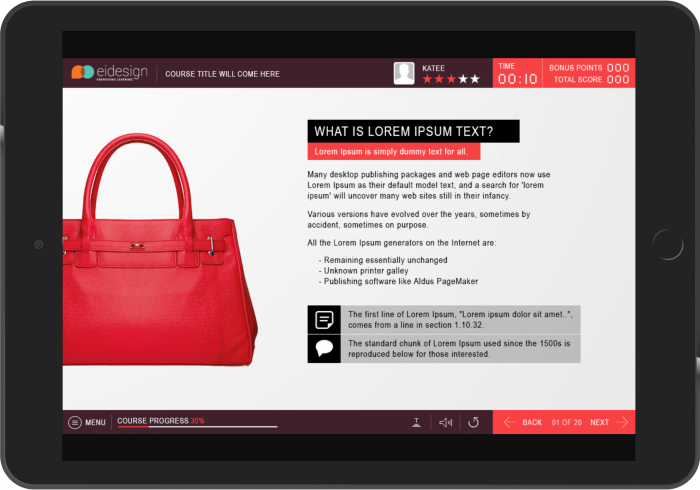
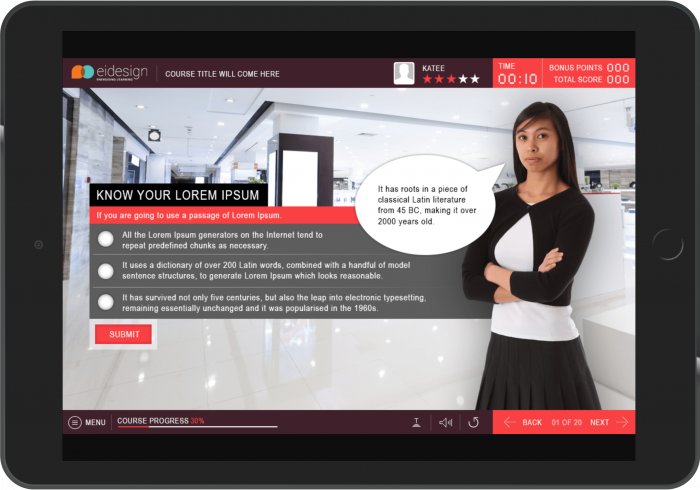 Compliance
Training
Compliance
Training